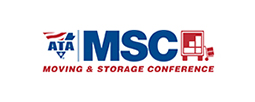Interstate vs. Intrastate Moving

Moving to a new home is an exciting journey, but understanding the differences between interstate vs. intrastate moving is crucial for a smooth transition. Interstate moving involves relocating across state lines, often requiring more planning and compliance with federal regulations. On the other hand, intrastate moving means staying within the same state, which can be simpler but still requires careful coordination. Whether you’re moving across the country or just a few cities away, knowing the distinctions can help you choose the right moving company, budget effectively, and avoid surprises. Let’s explore the key differences and challenges for both types of moves to help you make the best decision for your relocation needs.
1. Interstate vs Intrastate Moving
- Interstate Moving: This involves relocating from one state to another. For example, moving from California to Texas is an interstate move.
- Intrastate Moving: This refers to moving within the same state. For instance, relocating from Los Angeles to San Francisco is an intrastate move.
2. Regulations and Licensing
- Interstate Moving:
- Governed by federal regulations under the U.S. Department of Transportation (USDOT).
- Moving companies must have a USDOT number and comply with federal laws.
- Strict rules regarding pricing, contracts, and liability insurance apply.
- Intrastate Moving:
- It is regulated by state authorities, so requirements vary by state.
- Moving companies must have a state-specific license to operate.
- Regulations are generally less stringent compared to interstate moves.
3. Cost Differences
- Interstate Moving:
- Typically, more expensive due to longer distances, fuel costs, and additional services like packing and storage.
- Costs are often calculated based on weight and distance.
- Additional fees may apply for crossing state lines or using toll roads.
- Intrastate Moving:
- Generally, more affordable since the distance is shorter.
- Costs are usually based on an hourly rate or flat fee.
- Fewer additional fees compared to interstate moves.
4. Planning and Preparation
- Interstate Moving:
- Requires more advanced planning, often 8-12 weeks in advance.
- Research moving companies with interstate experience and proper licensing.
- Plan for potential delays due to weather, traffic, or logistical challenges.
- Intrastate Moving:
- Easier to plan, with 4-6 weeks often being sufficient.
- Choose a local moving company familiar with state-specific regulations.
- Shorter distances mean fewer logistical hurdles and quicker move times.
5. Moving Company Options
- Interstate Moving:
- Look for nationwide moving companies with a strong reputation for long-distance relocations.
- Verify USDOT numbers and read reviews to ensure reliability.
- Consider full-service movers for packing, transportation, and unpacking.
- Intrastate Moving:
- Local moving companies are often the best choice for intrastate moves.
- Check for state-specific licenses and local customer reviews.
- Many local movers offer flexible services, including hourly rates.
6. Time and Distance
- Interstate Moving:
- Longer distances mean more time spent on the road, often taking several days or weeks.
- Travel logistics, such as flights or overnight stays, may be necessary.
- Delays are more common due to unforeseen circumstances like weather or traffic.
- Intrastate Moving:
- Shorter distances result in quicker move times, often completed in a single day.
- Less time spent traveling means fewer disruptions to your schedule.
- Easier to coordinate and manage without extensive travel plans.
7. Packing and Logistics
- Interstate Moving:
- Requires more detailed packing to protect belongings during long-distance travel.
- Consider professional packing services to ensure safety and efficiency.
- Label boxes clearly and keep an inventory list for tracking.
- Intrastate Moving:
- Packing can be less intensive due to shorter travel times.
- DIY packing is often feasible, but professional services are still available.
- Label boxes by room to simplify unloading and unpacking.
8. Insurance and Liability
- Interstate Moving:
- Federal regulations require movers to offer two types of liability coverage: Full Value Protection and Released Value Protection.
- Consider purchasing additional insurance for high-value items.
- Intrastate Moving:
- Liability coverage varies by state, so check with your moving company for details.
- Additional insurance options may be available for added peace of mind.
9. Emotional and Practical Considerations
- Interstate Moving:
- It often involves leaving behind friends, family, and familiar surroundings.
- Research your new state’s cost of living, schools, and job market.
- Prepare for cultural differences and a longer adjustment period.
- Intrastate Moving:
- Easier to stay connected with loved ones and maintain routines.
- Familiarity with the state’s culture and amenities can ease the transition.
- Less drastic lifestyle changes compared to interstate moves.
10. Choosing the Right Move for You
- Interstate Moving: Ideal for those seeking new opportunities, a change of scenery, or relocating for work or family.
- Intrastate Moving: Perfect for those upgrading or downsizing within the same state while staying close to their current community.
Whether you’re planning an interstate vs. intrastate move, understanding the differences is key to a successful relocation. Interstate moves require more planning, compliance with federal regulations, and higher costs, while intrastate moves are often simpler and more affordable. By considering factors like distance, cost, and logistics, you can choose the right type of move for your needs and ensure a smooth transition to your new home.
Fuller Moving Services: Trusted Sacramento Movers
When it comes to finding reliable moving companies in Sacramento, Fuller Moving Services stands out as a trusted name in the industry. With years of experience and a commitment to excellence, we specialize in making local and long-distance moves seamless and stress-free. Whether you’re relocating within Sacramento or moving to a new state, our team of professional movers ensures your belongings are handled with care and precision. From packing and transportation to storage solutions, Fuller Moving Services offers personalized services tailored to your unique needs. Trust the experts to make your next move a smooth and successful experience.
Moving Across State Lines or Within Your State? We’ve Got You Covered!
When it comes to California moving companies, Fuller Moving Services is your go-to partner for both interstate and intrastate moving. Whether you’re relocating across state lines or within California, our experienced team ensures a seamless and stress-free experience. Interstate moves come with unique challenges, from federal regulations to long-distance logistics, while intrastate moves require local expertise and efficiency. Fuller Moving Services excels in both, offering tailored solutions to meet your needs. Trust our professionalism, attention to detail, and commitment to customer satisfaction for your next move. Ready to get started? Contact us today and make your California relocation a breeze!













